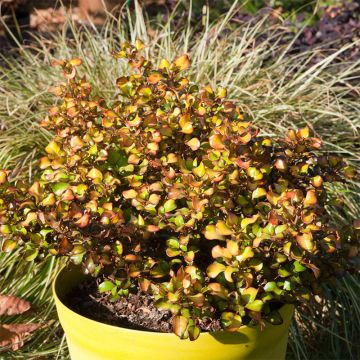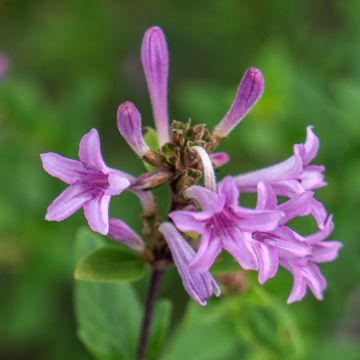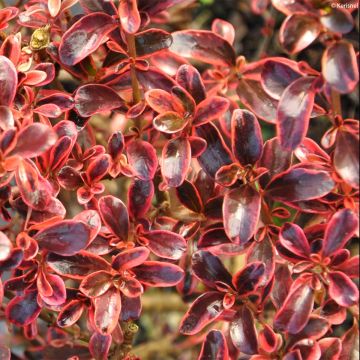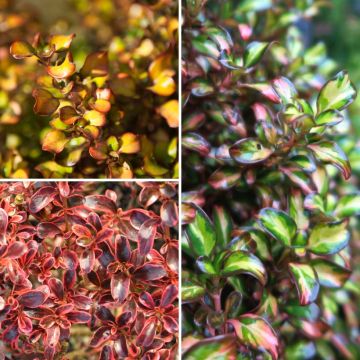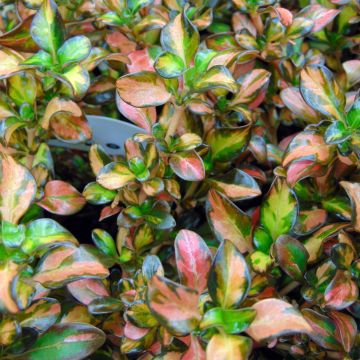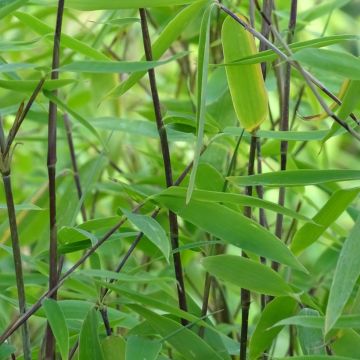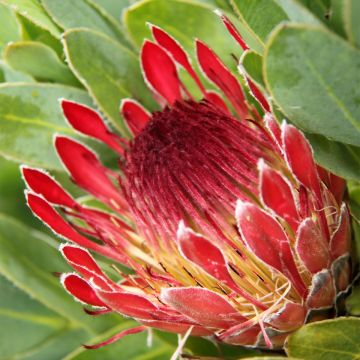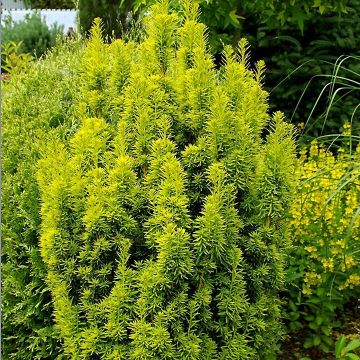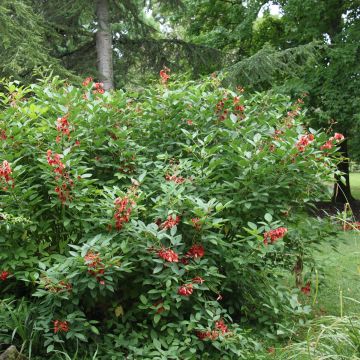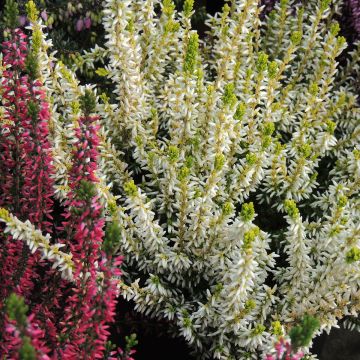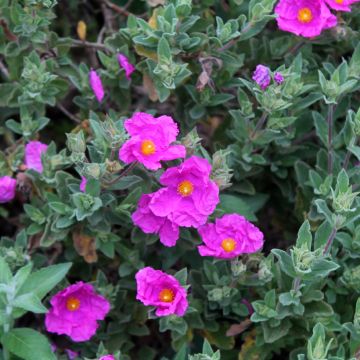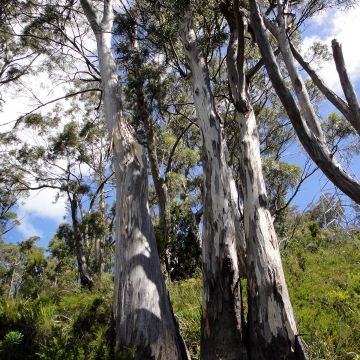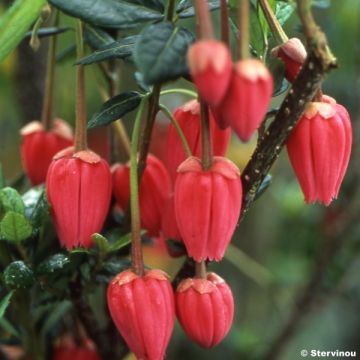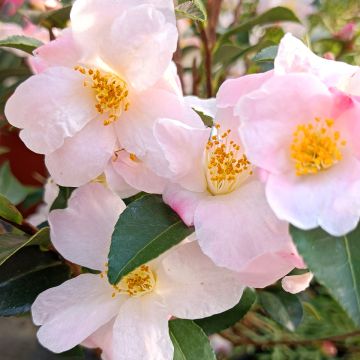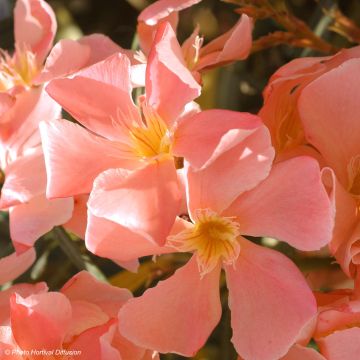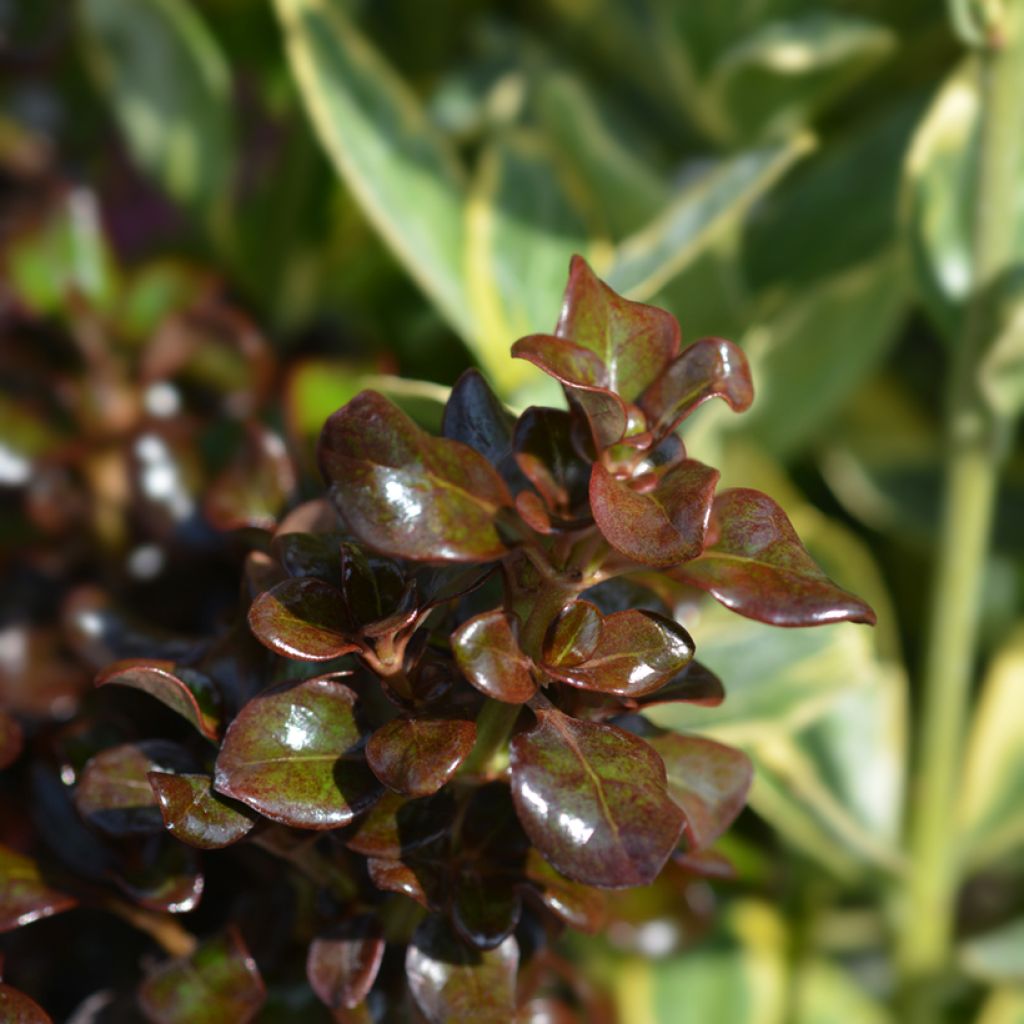

Coprosma Chocolate Soldier - Mirror plant
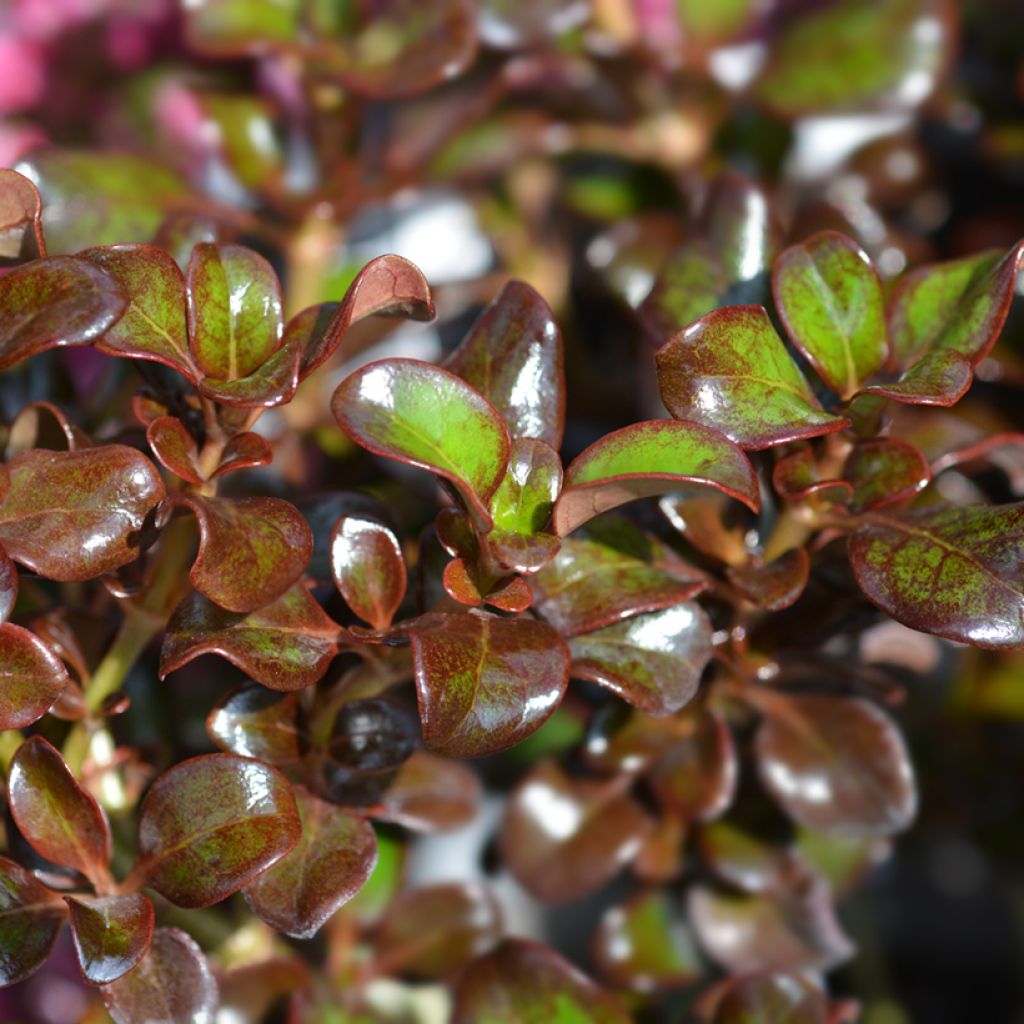

Coprosma Chocolate Soldier - Mirror plant
Coprosma Chocolate Soldier
Coprosma Chocolate Soldier
Mirror Plant, Looking-glass Plant
This item cannot be shipped to the selected country
Delivery charge from 5,90 €
Delivery to Corse prohibited
More information
Shipping country:
-
Andorra
-
Austria
-
Belgium
-
Bulgaria
-
Chile
-
Croatia
-
Cyprus
-
Czechia
-
Denmark
-
Estonia
-
Finland
-
France
-
Germany
-
Greece
-
Hungary
-
Iceland
-
Ireland
-
Italy
-
Latvia
-
Lithuania
-
Luxembourg
-
Malta
-
Monaco
-
Netherlands
-
Poland
-
Portugal
-
Romania
-
Slovakia
-
Slovenia
-
Spain
-
Sweden
-
Switzerland
-
United Kingdom
Schedule delivery date,
and select date in basket
This plant carries a 24 months recovery warranty
More information
We guarantee the quality of our plants for a full growing cycle, and will replace at our expense any plant that fails to recover under normal climatic and planting conditions.
From 5,90 € for pickup delivery and 6,90 € for home delivery
Express home delivery from 8,90 €.
Delivery to Corse prohibited: UE law prohibits the import of this plant from mainland France to Corse as part of the fight against Xylella fastidiosa. Please accept our sincere apologies.
More information
Would this plant suit my garden?
Set up your Plantfit profile →
Description
Coprosma 'Chocolate Soldier' is a small, upright bush, highly ornamental throughout the year. Its small, shiny, evergreen leaves are dressed in dark shades, mostly chocolate, sometimes tinged with dark green. Of New Zealand origin, it is not very hardy and will only withstand outdoor conditions in mild coastal climates. Once established, it can tolerate sea spray, wind, and drought, making it perfect for such conditions. In colder regions, it can easily be grown in a pot and overwintered indoors in a cool, bright room.
Coprosma is one of the 600 genera in the large Rubiaceae family, which includes over 10,000 species, including economically important plants like the coffee plant, and many ornamentals such as the enchanting-scented Gardenia. There are around 90 species of Coprosma, often bushes with small leaves, but also some trees with larger leaves, mostly dioecious (individual plants are either male or female) with a few monoecious exceptions. These plants originate from New Zealand, Australia, and various islands (Hawaii, Borneo, Java...).
'Chocolate Soldier' is a horticultural variety of this bush nicknamed the "mirror plant" due to the shine of its leaves. It is most likely a hybrid of Coprosma repens (formerly C. baueri), which, contrary to what the species name might suggest, is not creeping but in its country of origin forms a large bush or even a small tree 3 to 6 m tall, with strong branches covered in reddish-brown bark. It bears opposite, oval, elongated, shiny dark green leaves, measuring 3 to 7 cm long. With moderate growth and much more limited development, 'Chocolate Soldier' forms a small bush reaching a height of 1 m to 1.20 m when mature with a slightly smaller to equivalent width. Additionally, it tolerates pruning well, making it a compact plant suitable for low hedges and container gardening. Its habit is rather upright, dense, and irregular, giving it a somewhat wild silhouette, although the colour of its foliage gives it a more horticultural than natural appearance. The small, leathery leaves, approximately 3 cm long by 1.5 cm wide, are oval, opposite, and borne on short petioles. Their shiny appearance gives them a certain resemblance to boxwood for those unfamiliar with Coprosma. Their colour is mostly chocolate, especially in full sun, but it can mix with dark green hues, particularly on young leaves, or even with reddish edges. In summer, the bush produces inconspicuous male flowers.
Hardy down to -5°C in good conditions (especially well-drained soil), Coprosma 'Chocolate Soldier' will thrive on a mild Mediterranean or coastal climate, as it withstands wind and sea spray well. Its dark foliage will be ideal for enhancing light blooms and creating colour contrasts. Plant a Euryops chrysanthemoides 'Sonnenschein' alongside for a perfect combination. The finely cut leaves in a greyish-green shade will stand out both in shape and colour, while the golden yellow daisy-like flowers will sparkle against the chocolate backdrop of your small Coprosma. A Cassia corymbosa will make an excellent background, with its deeply cut, lush green tropical-looking foliage and bright yellow flowers blooming for several months. In the foreground, plant a Convolvulus cneorum, with its gorgeous velvety grey foliage and large funnel-shaped white flowers.
Report an error about the product description
Coprosma Chocolate Soldier in pictures
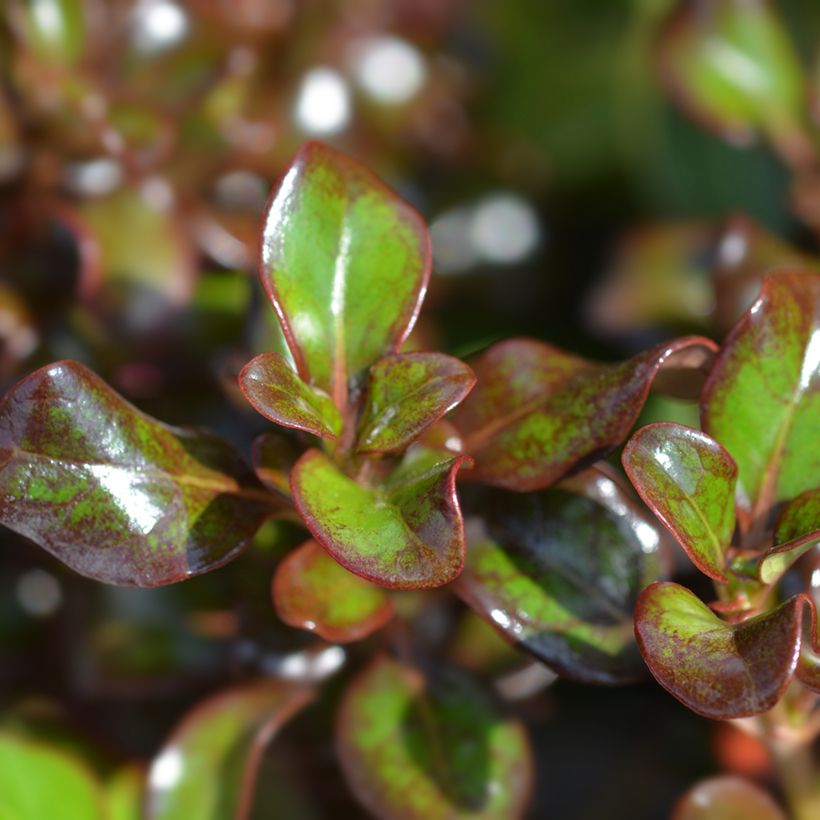

Plant habit
Flowering
Foliage
Botanical data
Coprosma
Chocolate Soldier
Rubiaceae
Mirror Plant, Looking-glass Plant
Cultivar or hybrid
Other Coprosma
Planting and care
Coprosma 'Chocolate Soldier' thrives in open ground in coastal regions with little frost. It is best planted in spring, to allow enough time for good rooting before the following winter. Choose a location in full sun or partial shade, colours will be more intense in the sun. It tolerates drought, salt spray, and poor soils, but dislikes the presence of limestone in the soil. Plant it in light, well-drained soil, for example, a mix of leaf compost, peat and river sand. The planting hole should be twice the size of the root ball. Water regularly to aid establishment. Once well settled, Coprosma can do without watering in summer.
Pruning is not essential. It should only be done sparingly if necessary, between April and August. Regularly water container-grown plants. In cold regions, bring them indoors to a cool, bright, minimally heated room before the onset of heavy frosts.
Modern hybrids appear to be less prone to attacks from scale insects and sooty mould. However, plants grown in a greenhouse will be more exposed to these pests and diseases.
Planting period
Intended location
Care
This item has not been reviewed yet - be the first to leave a review about it.
Evergreen shrubs
Haven't found what you were looking for?
Hardiness is the lowest winter temperature a plant can endure without suffering serious damage or even dying. However, hardiness is affected by location (a sheltered area, such as a patio), protection (winter cover) and soil type (hardiness is improved by well-drained soil).

Photo Sharing Terms & Conditions
In order to encourage gardeners to interact and share their experiences, Promesse de fleurs offers various media enabling content to be uploaded onto its Site - in particular via the ‘Photo sharing’ module.
The User agrees to refrain from:
- Posting any content that is illegal, prejudicial, insulting, racist, inciteful to hatred, revisionist, contrary to public decency, that infringes on privacy or on the privacy rights of third parties, in particular the publicity rights of persons and goods, intellectual property rights, or the right to privacy.
- Submitting content on behalf of a third party;
- Impersonate the identity of a third party and/or publish any personal information about a third party;
In general, the User undertakes to refrain from any unethical behaviour.
All Content (in particular text, comments, files, images, photos, videos, creative works, etc.), which may be subject to property or intellectual property rights, image or other private rights, shall remain the property of the User, subject to the limited rights granted by the terms of the licence granted by Promesse de fleurs as stated below. Users are at liberty to publish or not to publish such Content on the Site, notably via the ‘Photo Sharing’ facility, and accept that this Content shall be made public and freely accessible, notably on the Internet.
Users further acknowledge, undertake to have ,and guarantee that they hold all necessary rights and permissions to publish such material on the Site, in particular with regard to the legislation in force pertaining to any privacy, property, intellectual property, image, or contractual rights, or rights of any other nature. By publishing such Content on the Site, Users acknowledge accepting full liability as publishers of the Content within the meaning of the law, and grant Promesse de fleurs, free of charge, an inclusive, worldwide licence for the said Content for the entire duration of its publication, including all reproduction, representation, up/downloading, displaying, performing, transmission, and storage rights.
Users also grant permission for their name to be linked to the Content and accept that this link may not always be made available.
By engaging in posting material, Users consent to their Content becoming automatically accessible on the Internet, in particular on other sites and/or blogs and/or web pages of the Promesse de fleurs site, including in particular social pages and the Promesse de fleurs catalogue.
Users may secure the removal of entrusted content free of charge by issuing a simple request via our contact form.
The flowering period indicated on our website applies to countries and regions located in USDA zone 8 (France, the United Kingdom, Ireland, the Netherlands, etc.)
It will vary according to where you live:
- In zones 9 to 10 (Italy, Spain, Greece, etc.), flowering will occur about 2 to 4 weeks earlier.
- In zones 6 to 7 (Germany, Poland, Slovenia, and lower mountainous regions), flowering will be delayed by 2 to 3 weeks.
- In zone 5 (Central Europe, Scandinavia), blooming will be delayed by 3 to 5 weeks.
In temperate climates, pruning of spring-flowering shrubs (forsythia, spireas, etc.) should be done just after flowering.
Pruning of summer-flowering shrubs (Indian Lilac, Perovskia, etc.) can be done in winter or spring.
In cold regions as well as with frost-sensitive plants, avoid pruning too early when severe frosts may still occur.
The planting period indicated on our website applies to countries and regions located in USDA zone 8 (France, United Kingdom, Ireland, Netherlands).
It will vary according to where you live:
- In Mediterranean zones (Marseille, Madrid, Milan, etc.), autumn and winter are the best planting periods.
- In continental zones (Strasbourg, Munich, Vienna, etc.), delay planting by 2 to 3 weeks in spring and bring it forward by 2 to 4 weeks in autumn.
- In mountainous regions (the Alps, Pyrenees, Carpathians, etc.), it is best to plant in late spring (May-June) or late summer (August-September).
The harvesting period indicated on our website applies to countries and regions in USDA zone 8 (France, England, Ireland, the Netherlands).
In colder areas (Scandinavia, Poland, Austria...) fruit and vegetable harvests are likely to be delayed by 3-4 weeks.
In warmer areas (Italy, Spain, Greece, etc.), harvesting will probably take place earlier, depending on weather conditions.
The sowing periods indicated on our website apply to countries and regions within USDA Zone 8 (France, UK, Ireland, Netherlands).
In colder areas (Scandinavia, Poland, Austria...), delay any outdoor sowing by 3-4 weeks, or sow under glass.
In warmer climes (Italy, Spain, Greece, etc.), bring outdoor sowing forward by a few weeks.

